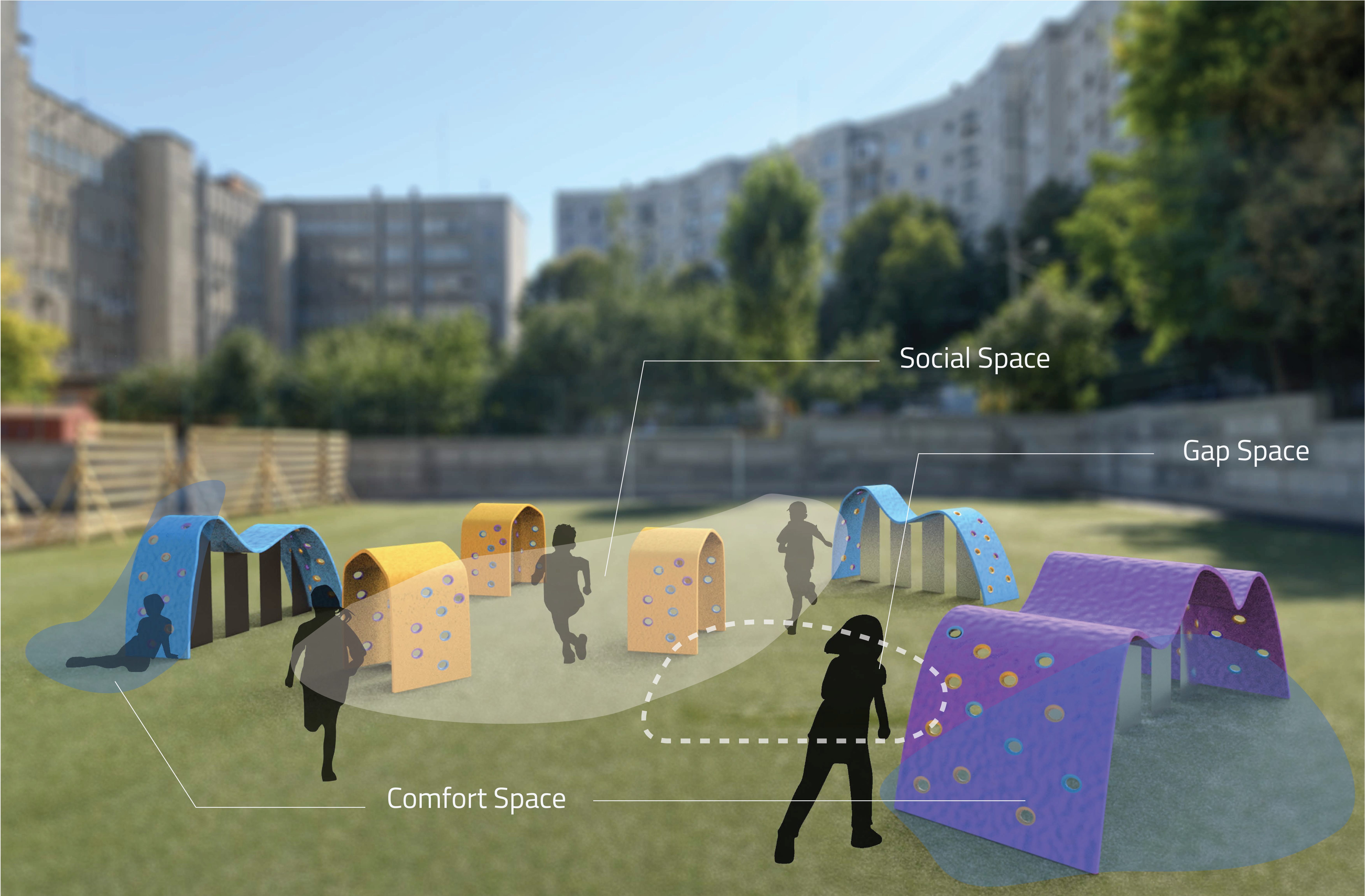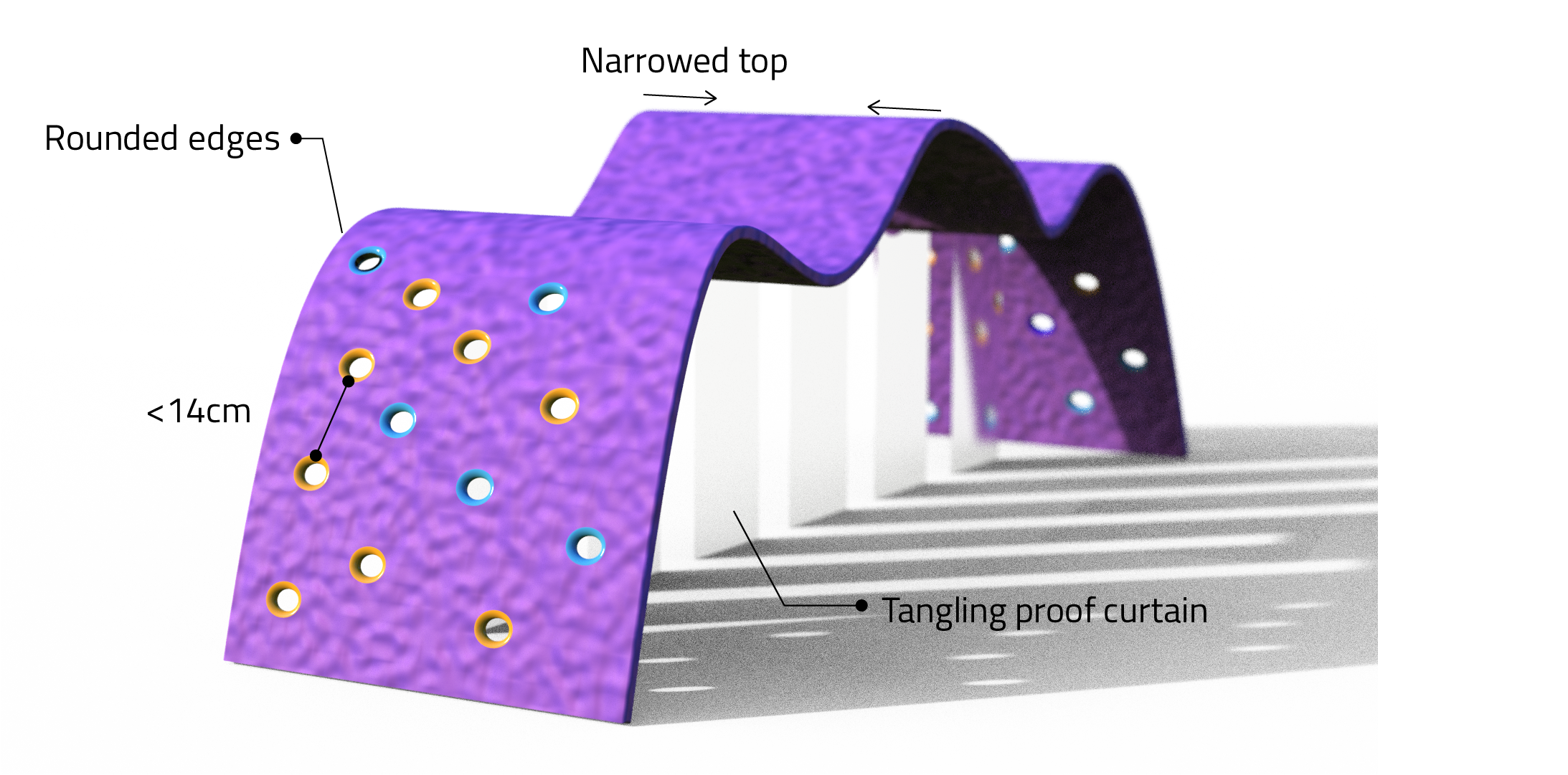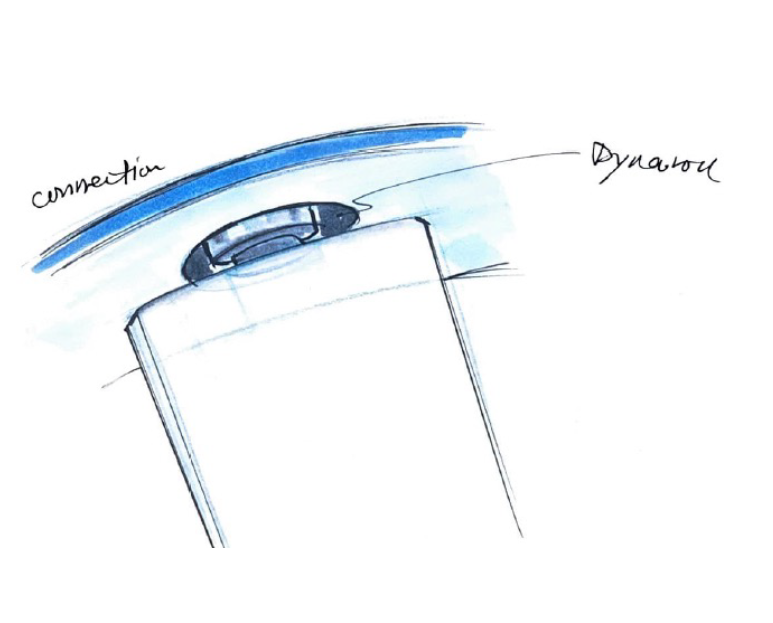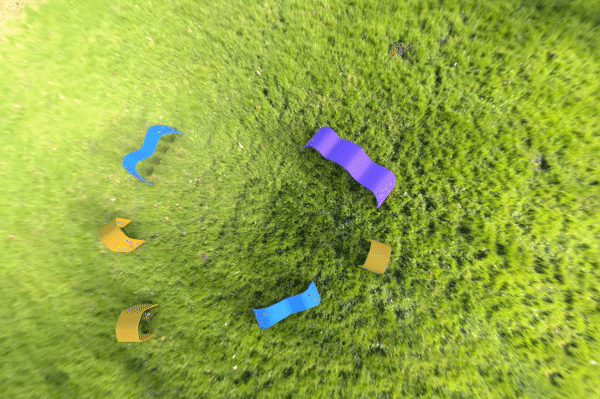Flow
Research through Design: How do space-changing elements influence children's social interaction in play?
2022
Individual
Keywords: design research, children, social play, fantasy play, playground for introverts









Introduction
Play plays a very important role in children’s early life, and they spent quite a lot time playing. The recess on the school playground are the main context where children can freely structure their own activities and choose peers with whom to interact, which forms their social transactions and peer relationships. But A lot of our current playground lacks diversity and easily favor the play preferences, by the amount of physical exercises they emphasise. If we want children to have a wide range of possibilities about how they think about themselves and who they can be, we need to provide playgrounds that enable a wide variety of play activities, and which do not allow particular forms of masculinity to dominate the available space. [Paechter and Clark, 2007]
I developed this research project on understanding how sizes, layouts, visual transparency, dynamic space changing influence children’s social play in a playground in order to provide a guideline for developing inclusive playground, and generate knowledge for researchers when they research in a school playground context.
I developed this research project on understanding how sizes, layouts, visual transparency, dynamic space changing influence children’s social play in a playground in order to provide a guideline for developing inclusive playground, and generate knowledge for researchers when they research in a school playground context.
Design Artefacts

Purple castle, blue castle and orange home
All the equipment have climbing holes on the wall. Inside the frame hangs multiple spinable translucent curtains.
Space Design
A playground from introverts' perspective

The design provides space for different needs from children, especially for introverted children. They can still be part of a play by being in a close proximity while still have space for themselves to relax and unwind.
Social interaction space is where several children come together and social encounters and interaction can occur.
Gap space is distance between the child and equipment or between children.
Comfort space is spaces near architectural elements that provide comfort, in this case, are the equipment to lean against and the enclosure area to observe while being “out of the way”. [Tieben, 2015] It is a chill area supports relaxation, unwinding or stress relief experience and calmness during play.
Social interaction space is where several children come together and social encounters and interaction can occur.
Gap space is distance between the child and equipment or between children.
Comfort space is spaces near architectural elements that provide comfort, in this case, are the equipment to lean against and the enclosure area to observe while being “out of the way”. [Tieben, 2015] It is a chill area supports relaxation, unwinding or stress relief experience and calmness during play.
Supported Play Types
Physical play and Fantasy play
The design supports physical play. It offers different running routes for children. Children are supported to play chasing, tag, hide-and-seek, or other physical games. Children can climb on top of the equipment, jump off or slide down from the top. [Korhonen et al., 2009]. Children are expected to spin or push through the curtain.
Fantasy play can also be elicited through bright colours and shapes. Castle and home are very common objects fantasied by children. The shape is designed abstract because playgrounds should typically avoid equipment that is too specifically designed, which limits children’s imagination. A simpler structure allows more room for pretend play [Fernelius and Christensen, 2017].
Fantasy play can also be elicited through bright colours and shapes. Castle and home are very common objects fantasied by children. The shape is designed abstract because playgrounds should typically avoid equipment that is too specifically designed, which limits children’s imagination. A simpler structure allows more room for pretend play [Fernelius and Christensen, 2017].
User Study

Dutch children, 6 - 8 years, hip width, height and foot size [TNO, 2010]

The width and height dimension based on Dutch children's body data

The depth and hole size
The depth is based on field trip to playgrounds and safety suggestions from U.S. Consumer Product Safety Commission [1986]. The hole size is based on Dutch children's average foot size.Safety Considerations

Safe tread rise for climbing and tangling proof curtain
The gap between each climbing hole should be less than 14cm to ensure children can climb safely. The curtain is made of PVC and it is thick enough so that children don’t get tangled with it. The middle of the frame is narrowed for better support. All edges are rounded for safeness.
Strong dynaroll connecting curtain to the frame
The curtain is spinable and connected to the ceiling with ball bearings. It is strong enough to hold if children pull the curtain. The smooth texture of PVC also prevents children from hanging onto it. Manufacturing Considerations
The frame is made from recycled plastic, which is sustainable and also easy to be mould for a fluid shape.
The curtain material is translucent PVC, 40cm width x 4mm depth, based on online suppliers' information.
The curtain material is translucent PVC, 40cm width x 4mm depth, based on online suppliers' information.
Physical Demonstrator

Methods
Expert Interview and co-constructing stories
The evaluation was conducted with expert interviews, combined with co-constructing stories. Experts are three primary school teachers, one child therapist, one parent, and one playground designer.
Co-constructing consists of two phases: sensitisation and elaboration. Experts were asked about their past experience with 6 - 8 years old and children’s play patterns. In the elaboration phase, experts envision the scenarios with the design.[Participatory Design Conference et al., 2012]
Co-constructing consists of two phases: sensitisation and elaboration. Experts were asked about their past experience with 6 - 8 years old and children’s play patterns. In the elaboration phase, experts envision the scenarios with the design.[Participatory Design Conference et al., 2012]
Results
Center category vs Margin category
 It has been observed that if a child is a boy, old, popular or adventurous, they have a higher chance to dominate the playground, this type of group will be referred to as the ”centre category” in the following paragraph. However, if a child is a girl, young, unpopular or quiet, they have less chances to be in the centre of a play circle. This type will be referred to as the ”margin category”
It has been observed that if a child is a boy, old, popular or adventurous, they have a higher chance to dominate the playground, this type of group will be referred to as the ”centre category” in the following paragraph. However, if a child is a girl, young, unpopular or quiet, they have less chances to be in the centre of a play circle. This type will be referred to as the ”margin category”How does the size influence children's play preference?

Suitable children amount for each design
The purple castle is designed to fit 5 - 7 children, the blue castle is for 3 - 4 and the orange home is for 1 - 2. The centre category children are expected to play more at bigger ones while the margin category children will probably hang out around the orange homes because of the comfort and independence provided by its more enclosed features. However, the games children manage to come up with different equipment also influence their choices of the equipment.How does layout influence children's social interaction?


Small equipments vs. Big equipments in the center
Putting the home shape in the centre is double-sided. On one side, it simultaneously provides an observation point for the margin category children and creates closer proximity between the two categories. Experts acknowledged the importance of physical close proximity (for example, how close two children sit next to each other in a classroom) when forming a friendship. It is assumed that the same principle is applicable in a playground. On the other side, being surrounded by the centre category can be intimidating for the margin category, which might stop them completely from approaching the play area. Therefore, an optimal distance that creates enough physical proximity without social pressures is yet to be found.Does transluency create comfort?

Unfortunately, children are not expected to have long conversations through the holes and translucent curtains. Rather than creating comfort, the features actually elicit curiosity from children.
What if the playground change over time?

A playground updated regularly by the school
A dynamic playground is much preferred from both children and school’s perspectives. It brings excitement and inclusion. The domination phenomena of equipment is profound. Manufactured equipment can set up uncomfortable power relations that influence participation, with certain pieces of equipment being dominated by more dominant and sociable children. The dynamic playground detaches the invisible control from the centre category and empowers the margin category to have the negotiation opportunity, which provides a positive social interaction [de Valk et al., 2015] and improves the inclusion on the playground.
References:
Tieben, R. (2015). Activating play : a design research study on how to elicit playful interaction from teenagers. PhD thesis, Technische Universiteit Eindhoven.
de Valk, L., Bekker, T., and Eggen, J. (2015). Designing for social interaction in open-ended play environments. International Journal of Design, 9(1):107–120.
Participatory Design Conference, Simonsen, J., Halskov, K., Winschiers, H., Participatory Design Conference, Association for Computing Machinery-Digital Library, Lee, Y., and Bødker, K. (2012). PDC 2012 Embracing New Territories of Participation. ACM.
Fernelius, C. L. and Christensen, K. M. (2017). Systematic review of evidence-based practices for inclusive playground design. Children, Youth and Environ- ments, 27:78
Fernelius, C. L. and Christensen, K. M. (2017). Systematic review of evidence-based practices for inclusive playground design. Children, Youth and Environ- ments, 27:78
Monke, S. (2021). The expert interview as a method of qualitative social research. Beltz Verlag, Weinheim, Germany.